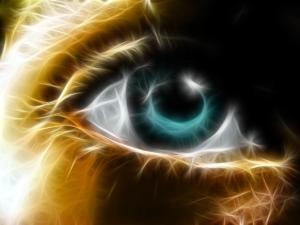“As a blind man, I think that I see a lot better than I did when I was sighted because I don’t really think we see with our eyes. I think we live in darkness when we don’t look at what’s real about ourselves, about others, or about life. No operation can do that. When you see what’s real about yourself, you see a lot. And you don’t need eyes for that.” (At First Sight 1999 Val Kilmer)
“I am learning to see. I don’t know why it is, but everything enters me more  deeply and doesn’t stop where it once used to. I have an interior that I never knew of. Everything passes into it now. I don’t know what happens there.”
deeply and doesn’t stop where it once used to. I have an interior that I never knew of. Everything passes into it now. I don’t know what happens there.”
—Rainer Maria Rilke, from “The Notebooks of Malte Laurids Brigge,” (1910)
We see ONLY what we want to see.
We see ONLY what we are looking for.
We hear ONLY what we want to hear.
We hear ONLY what we are listening for.
“At first, it appears that nothing could be easier than seeing. We just point our eyes where we want to go, and gather in  whatever there is to see. Nothing could be less in need of explanation. The world is flooded with light, and everything is available to be seen. We can see people, pictures, landscapes, and whatever else we need to see, and with the help of science we can see galaxies, viruses, and the insides of our own bodies. Seeing does not interfere with the world or take anything from it, and it does not hurt or damage anything. Seeing is detached and efficient and rational. Unlike the stomach or the heart, eyes are our own to command: they obey every desire and thought.
whatever there is to see. Nothing could be less in need of explanation. The world is flooded with light, and everything is available to be seen. We can see people, pictures, landscapes, and whatever else we need to see, and with the help of science we can see galaxies, viruses, and the insides of our own bodies. Seeing does not interfere with the world or take anything from it, and it does not hurt or damage anything. Seeing is detached and efficient and rational. Unlike the stomach or the heart, eyes are our own to command: they obey every desire and thought.
“Each one of those ideas is completely wrong. The truth is more difficult: seeing is irrational, inconsistent, and undependable. It is immensely troubled, cousin to blindness and sexuality, and caught up in the threads of the unconscious. Our eyes are not ours to command; they roam where they will and then tell us they have only been where we have sent them. No matter how hard we look, we see very little of what we look at. If we imagine the eyes as navigational devices, we do so in order not to come to terms with what seeing really is. Seeing is like hunting and like dreaming, and even like falling in love. It is entangled in passions–jealousy, violence, possessiveness; and it is soaked in an affect–in pleasure and displeasure, and in pain. Ultimately, seeing alters the thing that is seen and transforms the seer. Seeing is metamorphosis not mechanism.”
James Elkins, The Object Stares Back
“It makes me wonder how seeing has made me blind—by giving me cheap confidence that one quick glance at things can tell me what they are, by distracting me from learning how the light inside me works, by fooling me into thinking I have a clear view of how things really are, of where the road leads, of who can see rightly and who cannot. I am not asking to become blind, but I have become a believer. There is a light that shines in the darkness, which is only visible there.”
–Barbara Brown Taylor, Learning to Walk in the Dark, p. 108
Also check out:
https://ronirvine.wordpress.com/2013/06/06/seeing-with-the-heart/
https://ronirvine.wordpress.com/2008/11/20/seeing/
https://ronirvine.wordpress.com/2008/12/28/seeing-beauty/
https://ronirvine.wordpress.com/2008/11/20/through-a-glass-darkly/
And 50 quotes with comments on the eyes:

May 4th, 2017 → 3:44 am
[…] Seeing […]
LikeLike
October 21st, 2020 → 5:53 pm
[…] Seeing […]
LikeLike